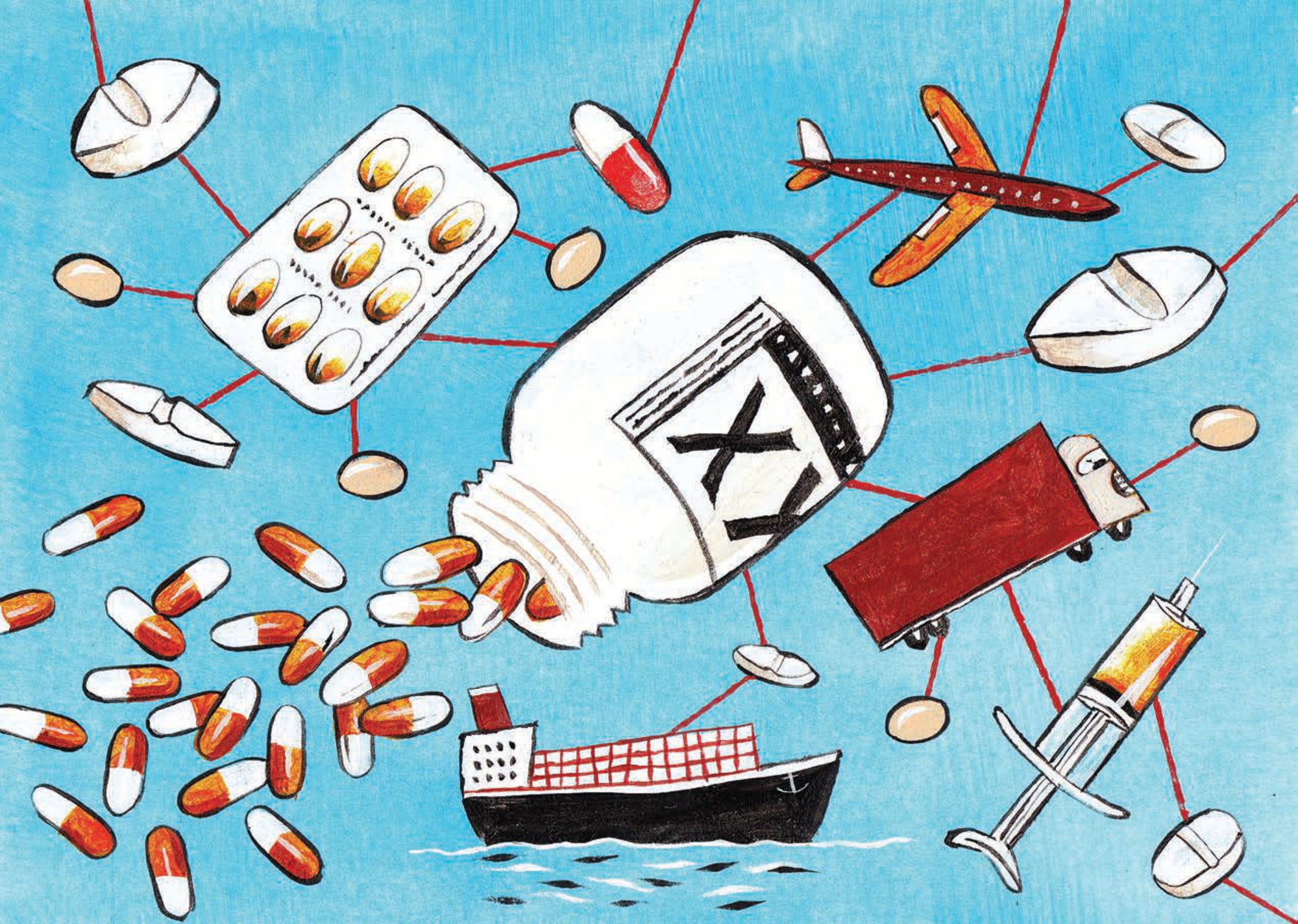This study has compiled and analysed a unique international set of customs seizure data and other enforcement data, combined with structured interviews with industry, trade and customs experts, to quantitatively assess the value, scope and trends of the trade in counterfeit pharmaceutical products. It finds that world trade in counterfeit pharmaceuticals accounted for as much as USD 4.4 billion in 2016, which represents 0.84% of world trade in pharmaceuticals. Furthermore, the range of affected medicines is growing.
Counterfeiters target a wide and growing range of pharmaceuticals including antibiotic, lifestyle treatments, cancer treatments, pain killers and anti-malaria drugs. Counterfeiters also target diabetes treatments, and central nervous systems medicines.
India and China are the largest identified producers of counterfeit pharmaceuticals. The products are shipped worldwide, with a special focus on African economies, Europe and the United States. In addition, Singapore and Hong Kong (China) are among the most important transit points for counterfeit products, mainly exporting them in small parcels to the United States, Europe, Japan and some South American economies. Other relevant transit points for fake pharmaceuticals include Yemen, the United Arab Emirates and Iran. From these countries, fake pharmaceuticals are reshipped either to African economies such as Egypt or to Ethiopia by air and sea, or to Europe and the United States, by mail. As law enforcement and regulatory pressure has increased within China, key aspects of production may be moving elsewhere, to selected other South-East Asian economies.
Express courier and postal parcels – driven by the rising popularity of e-commerce – are the most popular ways of shipping counterfeit medicines, significantly complicating the screening and detection processes and lowering the risk of detection and penalties.
Companies registered in the United States are hit the hardest by this trade in counterfeits, but those in other OECD countries are also strongly affected (notably Switzerland, Germany and France). Almost 38% of all seized counterfeit medicines infringe the intellectual property (IP) rights of firms registered in the United States.
Counterfeit medicines have a wide range of negative consequences. Legitimate producers lose sales to counterfeiters, while governments lose taxes and face long term issues related to managing health care in countries. Importantly, there are of course effects on the individuals who are very often unaware of the issue, and who fall victim to low quality counterfeit products that do not treat their medical needs, and which can adversely affect their health.
Producers and governments have been active in combatting counterfeiting as it threatens their considerable investment in developing new products, while introducing uncertainty about the effectiveness and value of their products. Producers, for example, have been developing techniques to improve the tracking and tracing of their products, to make it more difficult for counterfeiters to penetrate markets, and they have worked closely with governments to support efforts to disrupt illicit trade in their products.
